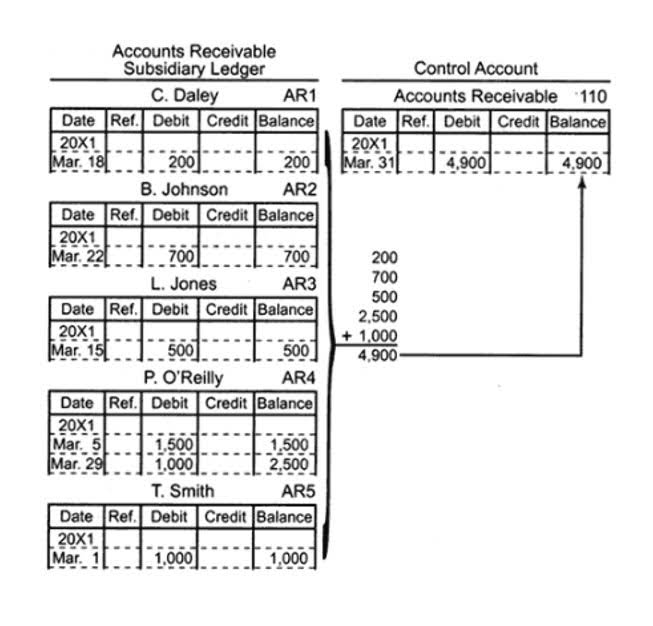
To make an informed choice, you need to calculate the after-tax salvage value of the equipment, which will significantly impact your company’s financial statements and tax liabilities. This guide aims to demystify the concept of after-tax salvage value, illustrating its importance in financial decision-making and providing a step-by-step process to calculate it accurately. Learn how to calculate the after-tax salvage value of business assets, a crucial factor in financial decision-making and accurate financial reporting.

Double-Declining Balance Method

These tools analyze historical data, usage patterns, and market conditions to improve salvage value forecasts—helping businesses plan better for asset disposal or resale. Understanding after tax salvage value is a crucial component in determining the overall profitability of an investment or asset. It helps businesses and individuals estimate the net cash flow they will receive when disposing of an asset after taking into account the applicable tax consequences. In this article, we’ll walk you through the process of calculating the after tax salvage value.
- To do this, you need to calculate the total depreciation, which is the annual depreciation expense multiplied by the useful life assumption.
- The IRS allows businesses to use the Accelerated Cost Recovery System (ACRS) or Modified Accelerated Cost Recovery System (MACRS) methods to determine the amount to be depreciated.
- Environmental and compliance costs are another factor to consider when estimating salvage value.
- By following these steps, you can accurately determine the salvage value of an asset and make informed decisions about its disposal or resale.
- This value is determined by various factors such as the condition of the asset, market demand, and technological advancements.
What role does the tax rate play in calculating after-tax salvage value?
- One of the most significant applications of salvage value is in the calculation net salvage value formula of depreciation for assets.
- With a 20% straight-line rate for the machine, the DDB method would use 40% for yearly depreciation.
- This phase often marks the end of explicit cash flow projections and is particularly relevant in discounted cash flow (DCF) analyses.
- Tax code requires the company to depreciate the plant over 5 years with $10 million salvage value.
- In the case of capital losses, they can often offset other capital gains or be carried forward to offset future gains.
- When managing capital assets, businesses must account for their eventual disposal.
The depreciable amount is like the total loss of value after all the loss has been recorded. The straight-line method is suitable for assets that are expected to provide equal benefit over their useful life, such as buildings or vehicles. The units of production method is appropriate for assets that are mainly used based on its output or production levels, such as machinery.
What Is the Loss for Tax Value?

Learn how to calculate Z spread in finance with our step-by-step guide, covering credit spreads, bond valuation, and risk management strategies. You can use this formula to determine the salvage value and assess the return on investment of an asset. Breaking it down, the depreciation percentage is divided by 100, then multiplied by the original price and how is sales tax calculated asset age. This example shows how the salvage value is determined by subtracting the total depreciation from the original cost. In some cases, depreciation can be ignored if the asset is not a significant contributor to the company’s overall expenses. Assets that are still in high demand and have a long remaining useful life may not require depreciation consideration.
- Companies estimate salvage value to determine the amount to which an asset’s value is depreciated over its useful life.
- Taxes can impact the salvage value of an asset by either reducing the amount of money received from the sale if there is a gain, or providing a tax deduction if there is a loss.
- This function is DDB(cost,salvage,life,period,factor), where “factor” defaults to 2 for the double declining balance method.
- For example, a business asset may have a salvage value of 10% of its original cost after 5 years.
- Knowing the after-tax salvage value can help businesses make informed decisions about when to sell or dispose of an asset.
- The tax rate is used to calculate the tax on the gain or loss from the sale of an asset, which is then added to or subtracted from the net selling price to determine the after-tax salvage value.
Economic Factors

Unlock the secrets of the APR formula and learn how it impacts your finances, including interest rates, fees, and loan costs, in this expert guide. To calculate the salvage value, you need to start with the original cost of purchase. The salvage value is a crucial concept to understand when it comes to asset depreciation. The salvage value of a piece of engineering machinery is INR 30,000 after 7 after tax salvage value formula years, given a cost of INR 100,000 and an annual depreciation of INR 10,000. This method can be used to depreciate assets where variation in usage is an important factor, such as cars based on miles driven.
How to Calculate Sample Variance in Excel
Salvage value is typically expressed as a percentage of the asset’s original cost. For example, if an asset has a salvage value of 20%, it means that the asset can be sold for 20% of its original cost. Discover how the FCFE equation is crucial for valuation, helping investors understand a company’s true financial health and potential.

Depreciation Methods and Their Impact on ATSV
It is a critical component in assessing the profitability of an investment and the financial impact of disposing of an asset. Salvage value is a concept that holds significant importance in the world of business. This value plays a crucial role in financial decision-making as it affects various aspects such as depreciation, asset disposal, and capital budgeting. Understanding the definition and significance of salvage value helps business owners and managers make informed choices and plan for the future. In the following sections, we will explore the exact https://www.bookstime.com/ meaning of salvage value and delve into its relevance in business operations. Companies estimate salvage value to determine the amount to which an asset’s value is depreciated over its useful life.
The basis cost of an asset includes any initial taxes, shipping fees, or installation costs. It uses the straight-line percentage on the remaining value of the asset, which results in a larger depreciation expense in the earlier years. Some methods make the item lose more value at the start (accelerated methods), like declining balance, double-declining balance, and sum-of-the-years-digits.
